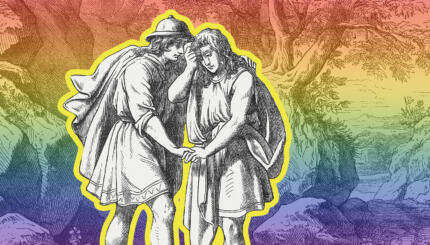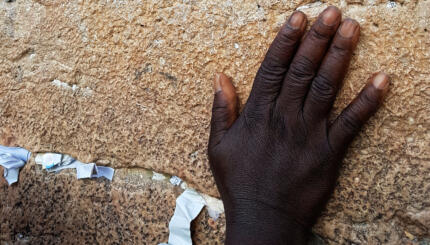From the moment we are born to the moment our lives end (and even in the days and months in which others anticipate and mourn our days and our deaths), Jewish traditions–ancient and evolving–provide ritual and ceremony, grounding the journey of human life and placing it in the content of covenant, belief, and history.
History and Themes
Most of the major Jewish lifecycle markers have their roots in biblical stories and law, and have developed through the twin impulses of Jewish law (halakhah) and custom–over time and among Jewish communities throughout the world. The ancient concept of brit, or covenant, central to the ceremony of brit milah (in which an eight-day-old baby boy is ritually circumcised and welcomed into the particular covenant between the Jewish people and God), imbues many other Jewish lifecycle events as well. Most effect a transition that is relevant for both individual and community, whether through the addition (or loss) of a member, or the assumption of a new set of interpersonal and communal obligations.
The ways in which Judaism marks and effects lifecycle passages reflect many themes central to Jewish life: a covenantal relationship with God; the individual’s responsibilities (and identity) as determined by her or his new status; the relationship to past and future generations, and to one’s community; and the power of liturgy and ritual to sanctify and effect transformation.
Ceremonies may involve many or all of these and other elements: blessings, sanctification over a cup of wine, symbolic purification and transformation through water (including immersion in a mikveh or ritual bath), and communal acknowledgement of the individual’s new status. Jewish lifecycle ritual can also be understood in the context of anthropological understandings of how cultures mark individual transitions in community.

Help us keep Jewish knowledge accessible to millions of people around the world.
Your donation to My Jewish Learning fuels endless journeys of Jewish discovery. With your help, My Jewish Learning can continue to provide nonstop opportunities for learning, connection and growth.
Contemporary Issues
The past three decades have seen a surge in innovation in Jewish lifecycle ritual, through the creation of new ceremonies and the re-shaping of ancient ones. One of the most significant factors influencing these developments has been the impact of Jewish feminism, with its focus on women’s participation in Jewish life and on how ritual can be used to adequately mark the moments in Jewish women’s lives. There is also a renewed attention to aspects of life–for women and men–which are underplayed or unmarked in Jewish practice: For example, rituals and prayers of healing, and expanded ceremonies around divorce.
 The issue of how to define who is Jewish (and thus entitled to–and responsible for–full participation in lifecycle ceremonies) is a longstanding one; recent years have seen a more intense focus on this question. This is in large measure an outgrowth of the fact of Jewish pluralism, with movements’ (and rabbis’) different standards for conversion, attitudes toward intermarriage, and views on the relationship between one’s parentage and one’s Jewish status. Contemporary Jewish communities deal differently with the complex issues of participation, rights and responsibilities that are provoked by questions of Jewish status.
The issue of how to define who is Jewish (and thus entitled to–and responsible for–full participation in lifecycle ceremonies) is a longstanding one; recent years have seen a more intense focus on this question. This is in large measure an outgrowth of the fact of Jewish pluralism, with movements’ (and rabbis’) different standards for conversion, attitudes toward intermarriage, and views on the relationship between one’s parentage and one’s Jewish status. Contemporary Jewish communities deal differently with the complex issues of participation, rights and responsibilities that are provoked by questions of Jewish status.
In Practice
While Jewish clergy (rabbis and cantors) often facilitate Jewish lifecycle ceremonies, in most cases no particular individual is technically required to “perform” or preside over a lifecycle ritual or event.There is much diversity in attitudes toward acceptable roles for non-Jews in Jewish lifecycle ceremonies; while in traditional communities non-Jews usually only attend as guests, in liberal communities non-Jewish family members and friends may have a more central role. Lifecycle events are often marked with an appropriate contribution of tzedakah (righteous giving), or involvement in a social action or social justice project of relevance to the event and of interest to its participants.


